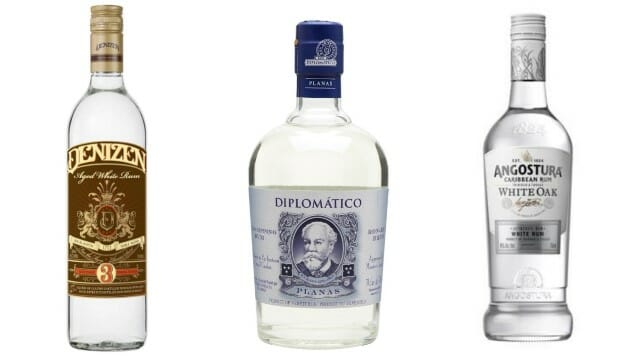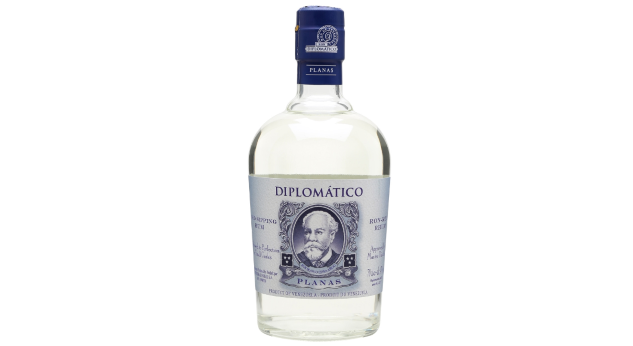The Best Style of Liquor Your Collection Is Probably Missing: Aged White Rum

First things first: You have some rum in the home bar, right? I’m hoping the answer is “yes,” even if you’re replying in the affirmative because of a two-year-old, half consumed bottle of Malibu that is begging to be poured down the drain and put out of its misery. If the answer is “no,” though, then you need to rectify the situation. As we’ve written about numerous times in recent memory, no home bar collection is truly complete without a selection of well-aged rum to complement your more visible bottles of bourbon or scotch. They’re indispensable for making tiki cocktails, but you’ll also likely be surprised by the versatility of rum as a brown liquor for neat drinking.
Aha, though—who says it needs to be brown? Although my interest in rum has been steadily growing over the course of the last few years, it’s only recently I realized I had been needlessly excluding what is rapidly becoming one of my favorite niches of the rum world: aged white rums. As it turns out, this particular niche is both endlessly versatile and often very affordable to boot.
Looking at my background in spirits, I can understand why the idea of aged white rum was able to avoid my attention for so long. Casual spirits drinkers tend to be poorly informed about rum as a spirit in general, and the liquor industry as a whole tends to reinforce an expectation that “darker color” = “older” = “more expensive” = “better.” Nowhere is this less universally true than in rum, where many of the bottles labeled as “dark rum” on store shelves are in fact completely unaged, achieving their hues through artificial coloring and flavoring added after distillation. By the same token, just because a rum is “white” or “silver,” that doesn’t necessarily mean it’s unaged. In fact, a fair number of white rums on the market have indeed spent time within oak barrels, even if it’s just a few months. Others spend years aging in oak, just like the more sought-after aged rums, picking up color and flavor along the way—color that is then stripped out of the finished rum through filtration. This leaves a rum that benefits from the flavors and aromatics it picked up within the wood, while remaining clear in color.
Why do distilleries do this? Well, for the sake of higher quality mixers, for one. Clear rum is useful in creating drinks with light hues, but consumer expectation and perception also play a large part. After all, consumers look at clear liquors and perceive them as “lighter” and “smoother” than dark ones, and the palate is easily fooled by visual appearance. Aged “white” rums, then, allow distilleries to impart more flavor and interesting characteristics into their “basic” rum offerings, without the consumer being any the wiser in many cases.
Does it make a difference? Undoubtedly it does, something that was illustrated by Paste’s own blind tasting of “bottom shelf,” cheap white rums. In that tasting, we set a $15 maximum for 750 ml bottles, and when doing so I assumed that the result would be a field of entirely unaged rums. Lo and behold, I was wrong—the winner of the blind tasting turned out to be Angostura White Oak, which is aged for 3 years before having its color removed via filtration. And it’s a much better spirit for it, losing the raw ethanol character found in many of the lesser rums in that blind tasting, while gaining a lightly creamy texture and hints of spice and wood. It was enough to start me thinking: Have I been missing out on a really great, versatile segment of the rum market here?
And as it turns out: Yep, I pretty much was missing out on it. Well-aged white rums are the Swiss army knife of the tiki world, making wonderfully characterful daiquiris while also (theoretically) having enough substance to drink neat. Are you ever really going to sip these rums out of the Glencairn glass you use for scotch? Probably not, in all honesty—but you could, and that’s the whole point. They taste better than their competitors, make more interesting cocktails, and are often only marginally more expensive. It’s a win-win.
By now you’re presumably asking something along the lines of “So what aged white rums should I actually buy?” Here are two suggestions:
Denizen Aged White Rum
MSRP: $19.99

